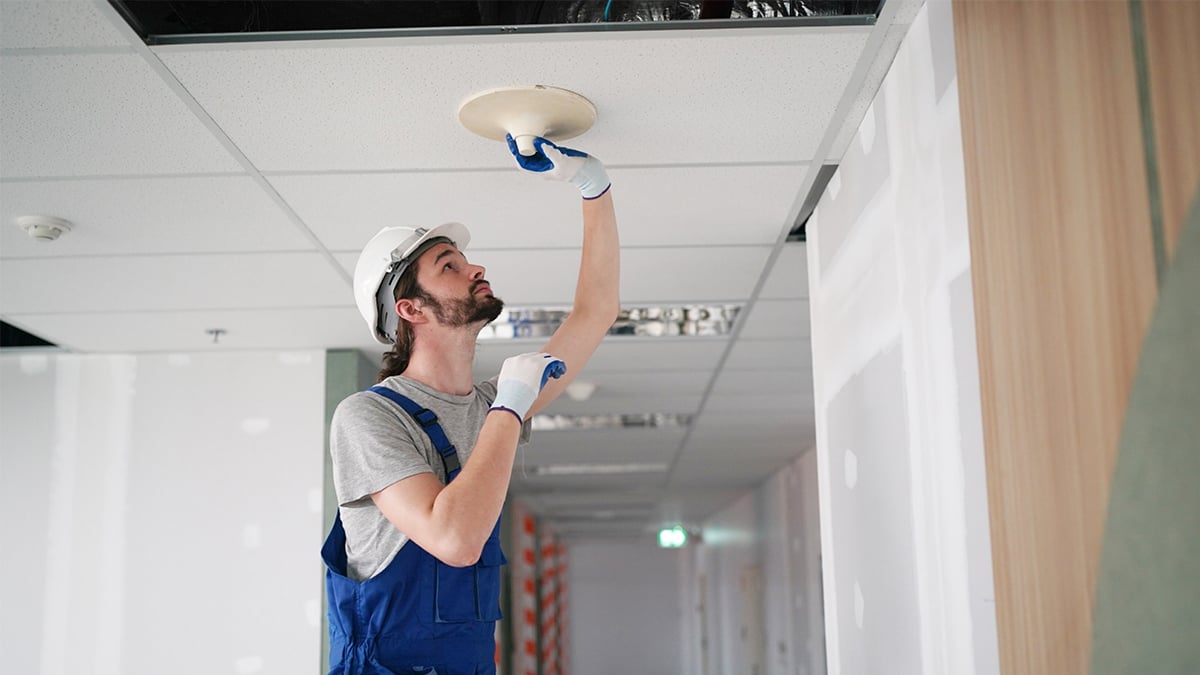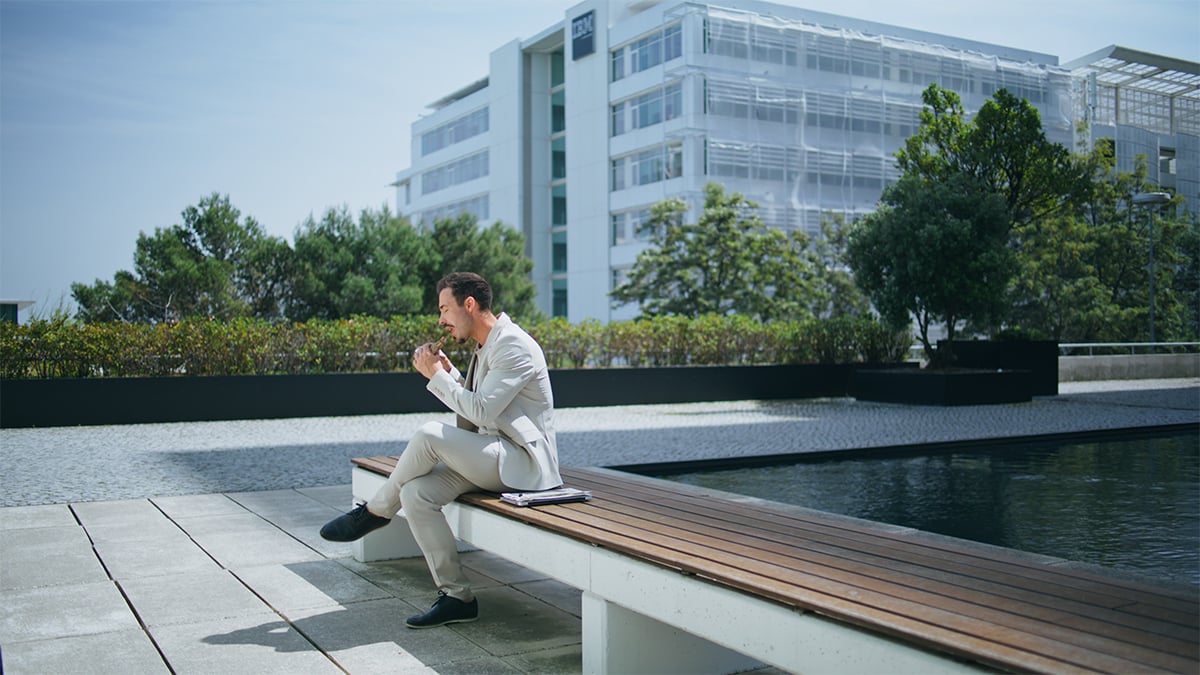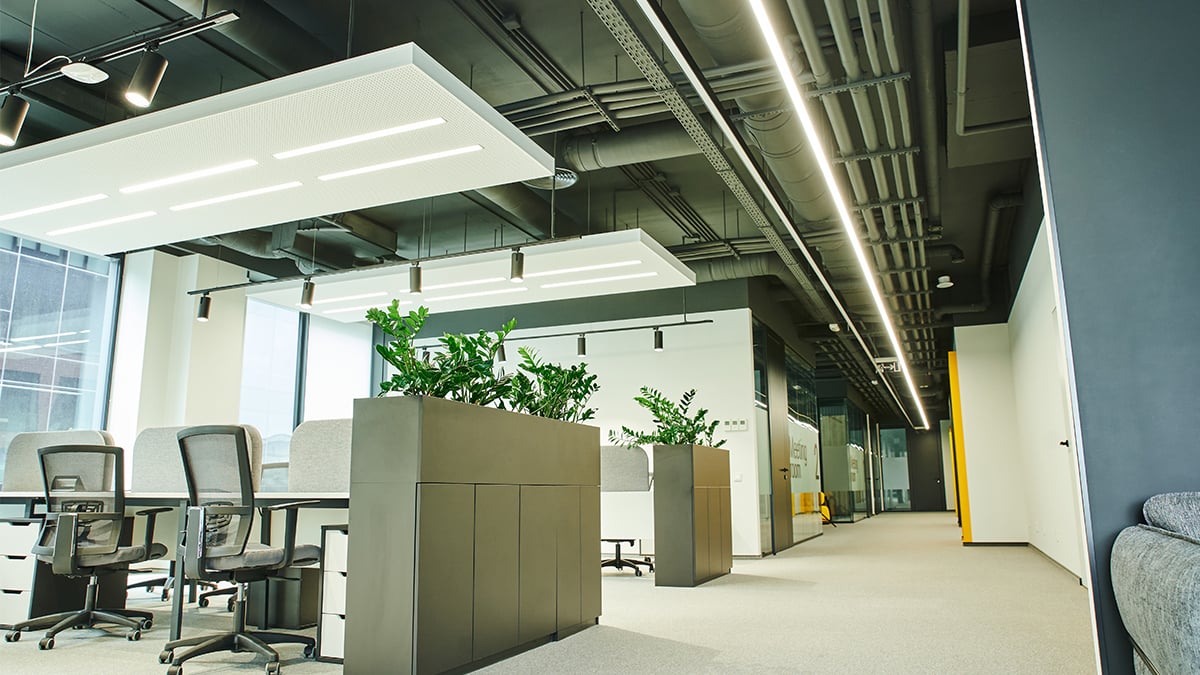Knowing how to block fluorescent lights at work is the key to reducing headaches, eye strain, and just feeling off.
From changing your lights to LEDs, taking breaks, and wearing special glasses, some of the fixes can bring both financial and health benefits.
It's time to free your workspace from that glaring glow, giving your eyes the break they deserve and creating a more comfy and productive vibe.
Are your office lights too bright?
Do you often find yourself squinting at your desk, battling persistent headaches, or feeling visually off at work? It might not just be your workload or screen time—it could be your office lighting.
Fluorescent lights, while commonly used, come with their set of issues. Studies suggest that they may increase harmful UV related eye diseases by up to 12%. Calculations indicate an alarming additional 3,000 cases of cataracts and 7,500 cases of pterygia annually due to fluorescent light sources.
This hidden impact extends beyond just the physical aspects. Computer workers grapple with fluorescent light sensitivity, experiencing discomfort and trigger migraine attacks by these lights. The effect on eyes of fluorescent ceiling lights in offices is profound and often underestimated.
So, if you've been questioning whether your office lights are too bright, consider not just the visual discomfort but also the potential long-term consequences.
We need to explore various strategies and solutions, whether it's rocking fluorescent light blocking glasses to alleviate migraines and fluorescent lights or weighing the perks of switching to LED lighting.
Additional reading: best LED lights for warehouse
How to block fluorescent lights at work
Struggling with the discomfort from a harsh fluorescent bulb at your workplace?
Here are effective solutions for fluorescent light sensitivity and to create a more visually friendly environment:
1. Change out fluorescent lights completely
Transform your workspace by bidding farewell to an outdated fluorescent lamp and ushering in a new era of illumination with energy-efficient LEDs—an unparalleled alternative in the realm of fluorescent light solutions.

Not merely a source of light, LEDs redefine your environment, offering both energy savings and a superior, more comfortable lighting experience. Their impact extends beyond just aesthetics, addressing concerns like fluorescent sensitivity that can plague traditional setups.
When contemplating these fluorescent light alternatives, our experts are ready to navigate you through the transition, ensuring a seamless integration of LED lighting that optimizes your workspace and enhances the well-being of your employees.
Take charge today; make the change for a workspace that not only looks brighter but feels brighter too. Connect with us for a consultation. It's not just about changing lights; it's about transforming your entire office setting.
2. Wear glasses to block fluorescent light
Combat the discomfort caused by glaring incandescent bulbs with fluorescent light blocking glasses. These specialized eyewear options go beyond mere style, aiming to minimize the impact of harsh lighting in workplaces.
Engineered to address concerns like fluorescent sensitivity and headaches, these glasses incorporate advanced coatings and technologies. By doing so, they act as a sophisticated filter, mitigating the unwanted effects of fluorescent bulbs.
Additional reading: LED vs fluorescent tube comparison chart
3. Use a cubicle cover to block light
If you've ever wondered how to block overhead light in a cubicle, give light covers a thought to block the light. Tailored to fit standard cubicle setups, these covers offer a flexible way to dim excessive light, tackling issues like glare, migraines, and sensitivity to fluorescent lights.
They don't just provide practical solutions but also add a personal touch to your workspace fixtures. Easy to adjust and install, these covers let you work without being blinded by harsh lighting.
It's a simple way to enhance your work environment, finding that sweet spot between a well-lit space and comfort, especially when you're sitting underneath fluorescent for such a long time.
Additional reading: LED sports lighting retrofits
4. Turn off office lights
Choosing to turn off the office lights goes beyond saving energy; it's a health-conscious decision. Relying on natural sunlight aids in relieving double vision, alleviating headaches, and reducing the amounts of blue light.
Natural light enhances your workspace, fostering a brighter and more inviting environment. By embracing this, you not only improve your well-being but also contribute to a sustainable and pleasant work atmosphere.
This straightforward switch brings dual benefits, enhancing your comfort and making your workspace more enjoyable. It's a simple yet impactful choice that aligns with your well-being and the environment.
Additional reading: Are fluorescent lights bad for you
5. Take a break
Amid a hectic workday, don't forget to take a break. The 20-20-20 rule is a simple yet effective strategy to alleviate eye strain caused by prolonged screen time.

For every 20 minutes spent working on a screen, shift your focus to an object 20 feet away for 20 seconds. This quick and easy routine helps reduce eye fatigue, prevents blurred vision, and minimizes the impact of harsh lighting.
By incorporating the 20-20-20 periodic breaks into your daily routine, you'll not only safeguard your vision but also enhance your overall productivity. Your eyes need a break – give them the care they need.
Additional reading: sports lighting companies
6. Wear hats
Wide-brimmed hats not only add a fashionable touch to your work attire but also serve as a practical shield against excessive light.
These work especially well if you get glare from light sensitivity, which is often exacerbated by fluorescent floor lamps. Wearing a hat can create a personal zone of shade, easing the impact of bright lights and fostering a more comfortable work environment.
However, it's essential to seek permission from your employer or HR department. Some workplaces may have specific dress codes or policies regarding headwear, and obtaining approval ensures that you can comfortably manage light sensitivity without violating any workplace rules.
Additional reading: are led lights bad for you
7. Don't wear sunglasses inside the office
While sunglasses might seem like a quick solution, it's essential to understand their limitations. Sure, they may provide short-term comfort, but wearing sunglasses indoors can have long-term consequences for your eyes.
Sunglasses create dim conditions, offering immediate relief from bright lights. However, relying on them regularly can lead to your eyes adapting to the dark. Over time, this adaptation can cause more discomfort when exposed to normal indoor lighting conditions.
The human eye is designed to adjust to varying light levels. Constantly wearing sunglasses inside disrupts this natural adaptation process. Your eyes become accustomed to lower light levels, making it challenging to tolerate standard office lighting without discomfort.
Take, for example, when you come out of the movie theater. What happens when your eyes hurt from the movie theater is an example of your eyes squinting to try to filter the brightness of the light.
Instead of relying on sunglasses as a makeshift solution, consider exploring other strategies to address being sensitive to light. From adjusting office lighting to using specialized eyewear or seeking permission for personal lighting adjustments, there are alternative approaches that promote long-term eye comfort without compromising your eyes' natural adaptation to light.

Final points on fluorescent light blockers
Diving into various ways to tackle the discomfort from those unforgiving fluorescent lights shows that options like fluorescent light sensitivity glasses, covers, and filters bring some relief.
Yet, the real deal, the most effective fix, is waving goodbye to those fluorescents and saying hello to LED retrofit services. While each approach has its perks, making the leap to LED lighting shines as the best choice for a workspace that values energy efficiency and visual comfort.
If you're considering this transformation, contact us for a consultation. Let us guide you toward a brighter, more comfortable, and energy-efficient office space, ensuring your well-being takes center stage.
Additionally, we offer financing options to facilitate your transition to LED lighting, providing you with the flexibility you need.
Explore the benefits of LED lighting finance and use our LED savings calculator to understand the long-term advantages for your workspace.
Additional reading: How much does it cost to run an LED light bulb for 24 hours
FAQs
Do blue light glasses help with fluorescent lights?
Blue light glasses prove effective in reducing eye strain caused by prolonged exposure to fluorescent lights. Through the filtration of specific wavelengths, they minimize the potential impact of the blue light emitted, offering relief and improving overall visual comfort for individuals spending extended periods under harsh fluorescent lighting conditions.
Can fluorescent lights cause headaches?
Yes, fluorescent lights have been associated with causing headaches. The flickering and intensity of fluorescent lighting may contribute to eye strain, triggering tension headaches in some individuals. Reducing exposure or implementing strategies to minimize the impact of these lights can help alleviate headache symptoms.



%20(1).png?width=1080&height=1080&name=FES-Ebook-1%20(1)%20(1).png)